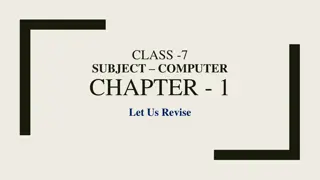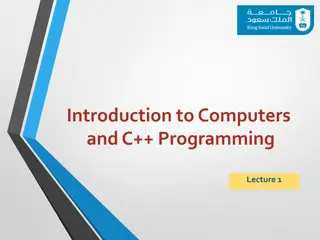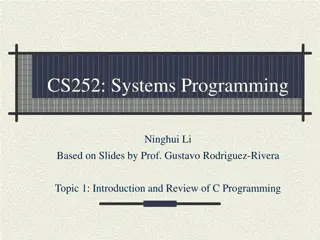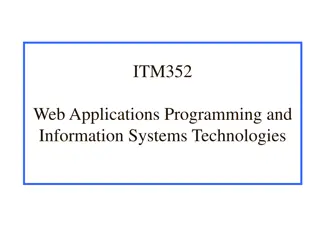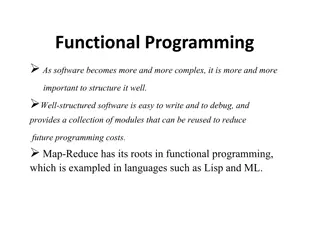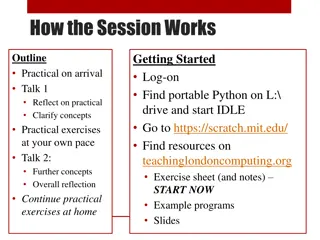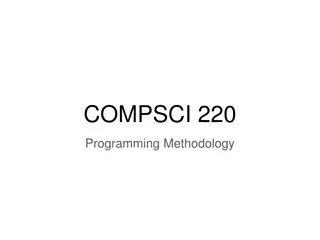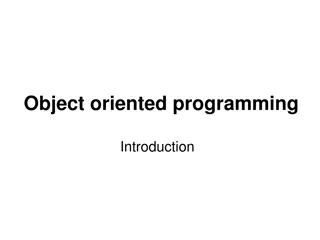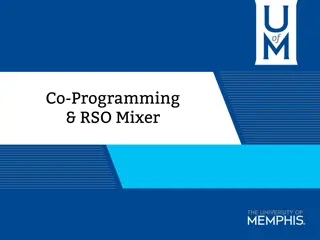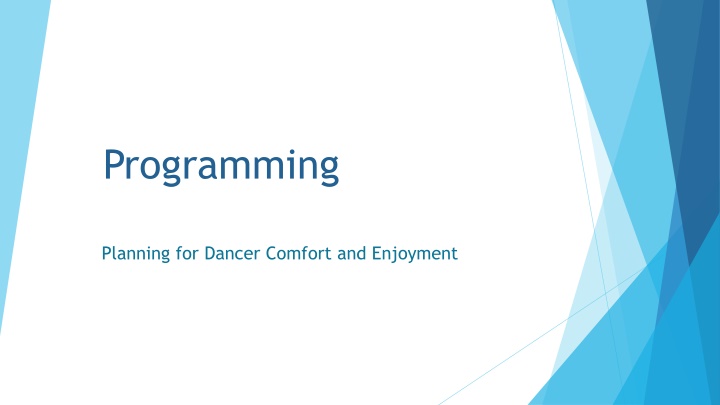
Planning for Dancer Comfort and Enjoyment in Programming
Learn how to plan programming for dancers' comfort and enjoyment by applying sequences, tips/brackets, and choreography with a focus on caller communication. Understand the importance of special sequences and tip/bracket planning to ensure dancers succeed and enjoy the dance.
Download Presentation

Please find below an Image/Link to download the presentation.
The content on the website is provided AS IS for your information and personal use only. It may not be sold, licensed, or shared on other websites without obtaining consent from the author. If you encounter any issues during the download, it is possible that the publisher has removed the file from their server.
You are allowed to download the files provided on this website for personal or commercial use, subject to the condition that they are used lawfully. All files are the property of their respective owners.
The content on the website is provided AS IS for your information and personal use only. It may not be sold, licensed, or shared on other websites without obtaining consent from the author.
E N D
Presentation Transcript
Programming Planning for Dancer Comfort and Enjoyment
Programming can and should be applied to a sequence, a tip/bracket, or a dance. Calling is communicating with the dancers. Each sequence is like a sentence. Each tip/bracket is a paragraph. The dance tells the story. Programming is the outline that helps the caller focus so the story makes sense. Programming should be applied to both Choreography and Music. The caller needs to build for a difficult sequence so the dancers succeed. Music should change from smooth and easy to exciting, with peaks and valleys built in.
Planning for a Special Sequence This is important if you have a special piece of choreography where you want the dancers to succeed and enjoy your special combination. Build up to the special choreography by analyzing the special choreography for the hard places. Newer callers, if you are not sure why the dancers may find a specific combination of calls difficult, consult with a more experienced caller, or even a dancer friend. Then call one or more sequence(s) that use the calls that will be featured in the special choreography from standard arrangements. Create some modules to use. If the dancers cannot complete the calls involved in the sequence from standard arrangements, you may have to use them repeatedly to help the dancers to dance the calls more easily. The next step would be to try using the featured call in a more unusual arrangement. Be careful about causing the dancers to fail. Special choreography is impressive only if the dancers succeed!
Planning for a Tip/Bracket (1) You have a guest tip/bracket or a tip/bracket as part of a multiple caller dance. What is your plan? Understand that dancers will find fancy choreography exciting only if they succeed. If the tip/bracket is for newer dancers, such as a special dance for class members, start easy! You need to build the dancers confidence in you and your calling. Circle Left, Allemande Left, Right and Left Grand, Promenade Home may seem too simple, but new dancers are scared and unfamiliar with your voice! Keep sequences short, so dancers can get back into the dancing. You may want to plan for standard lines in your sequences, so that if some squares break down, they can quickly get back into the dancing. It is a good plan to use the figure from your singing call in the patter, when you can give an extra beat for recovery, so the dancers can get used to it. Check the singing call figure for calls that you can eliminate in case the dancers fall behind. If the singing call figure is closely timed, you may want to have an alternate singing call figure to substitute.
Planning for a Tip/Bracket(2) Pick one of your best singing calls, BUT have more than one prepared in case one of the other callers uses YOUR song. Try to have a singing call to contrast with the caller before you; if they used a country song, use a pop song or rock and roll. This is a way to build those peaks and valleys into a festival or special dance. Duets can be dangerous. It is best to rehearse before the dance. If a chance to work with another caller happens, plan so that you can succeed or wait for a future opportunity. If you are a newer caller, ask the more experienced caller to use a music selection from your list they should be more able to be flexible. If they are not willing or able to use a singing call from your music and you are not comfortable with any of their selections, gracefully bow out. When you are new, the dancers will remember a poor performance. If you are the more experienced caller, working with a newer caller, choose a singing call that you know from their music selections. It will build their confidence. Be ready with your choice of media. Make sure the laptop, phone, tablet is booted up and the battery charged. Have your selection and alternates ready to play. Check the hookup and have the correct cords ready.
Planning for a Tip/Bracket(3) Choreography Plan for the dancers success! During the dance, watch the squares to see what calls give trouble to the floor. Avoid those calls. If you are on first, keep it simple, then add more complexity. Stick to memory or module choreography for safety - this is not the time to practice your sight resolution. If you have to use sight resolution, write down more than one square, even if that square has all your trusted friends in it. Again, work your singing call sequence into the patter. Fancy choreography will only impress the dancers, IF the dancers succeed!
Planning for a Dance Check the club website to see if there is a theme. Telephone your contact if there is no info on the website. If you have called for the group before, check your records to prevent total duplication of music used, especially for Holiday events. Look through your music selections for music that would fit the theme, both patter and singing calls. Choose your own personal strategy will your patter and singing call music be similar or diverse styles? If there is no scheduled theme, you can create one if desired. Examples: Weather; Beatles Music; Seasons; Broadway. Plan your music to build the peaks and valleys of excitement. I like to pull and save a playlist prior to leaving the house. If something changes, I can change the music play order, or insert a different choice. Be prepared for events which will interrupt the planned flow of your dance. For example: just prior to the dance, someone announces the death of a club member. Another possibility, during the dance, someone falls and has to go to the hospital.
Planning for a Class Create an overall lesson plan Be prepared to revise it! Analyze the calls to be taught to determine which are more complex. Group a combination of complex and simpler calls for each night. Decide what calls should be taught first so they can be used to introduce other calls. Example, teach arm turn Trades before introducing Swing Thru. Each call introduced should be called more than once every class night. Keep checkoff sheets, then check to see what has been neglected. I will set goals for each tip/bracket about which calls to use and what will be taught. Be careful with music selection. Some music will distract the student dancers. Set a playlist prior to the lesson. Consider separating clich combinations when teaching the component calls.



